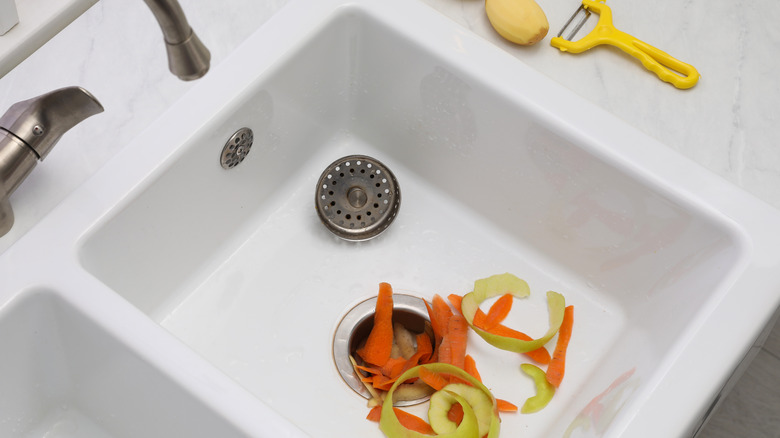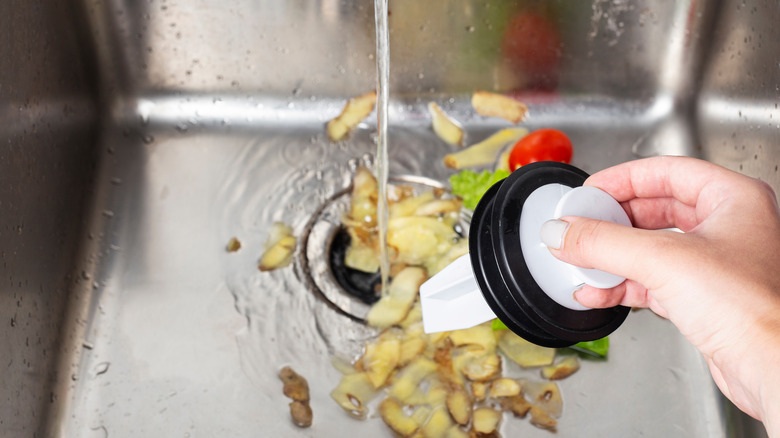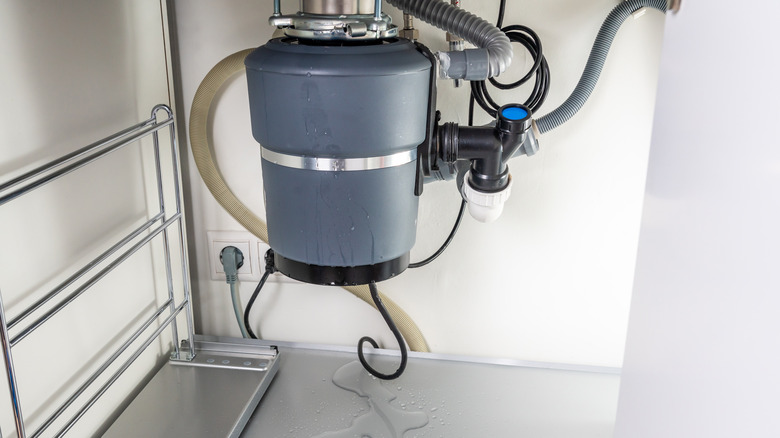How To Troubleshoot A Busted Garbage Disposal
We may receive a commission on purchases made from links.
No one likes washing dishes, but a garbage disposal helps make it a bit easier to manage. However, if your garbage disposal stops working, you then have to pull out food particles and debris by hand, a job that's anything but enjoyable. Garbage disposals sit under the sink and connect to the drain that food waste passes through from the sink. As noted by Home Depot, as food waste comes into the disposal, an impeller plate cuts it up, making it as small as possible so it can move down the drain without any problems.
Numerous problems can occur during this process. Some are very simple to remedy, such as the garbage disposal coming unplugged from the electrical outlet feeding it power, while others are a bit more complicated. Proper maintenance and cleaning your garbage disposal help to minimize risks of damage. Even so, you may have to troubleshoot to determine how to get it back up and running again in the event of a malfunction.
The disposal is jammed
There are limitations to what you should put down your garbage disposal. Items that are too large or hard may not break up enough to flow down the drain. Some may also become lodged in the impeller plate or other components. If the garbage disposal runs, but then shuts off, or makes a louder sound, that could indicate a clog. However, you should never put your hand into the disposal to pull items out — the system can turn on and cause serious injury.
PlumbingSupply.com offers a few strategies for this problem, including using a flashlight to look into the drain to determine if a clog is present — it could be as simple as a fork caught in the drain. If something is there, turn off the power to the system (unplug it from the electrical outlet to be safe,) and use pliers to pull it out. If this doesn't fix the problem, or if disposal runs for a few minutes and then shuts off from overheating, this is often an indication that the clog is further down in the system, and the chances are you'll need a plumber to disassemble it.
It's leaking
Another common problem with a busted garbage disposal is when it's leaking, perhaps creating a puddle in your kitchen cabinet under the sink. Leaks can happen at the top, bottom, and sides, notes Plymouth Plumbing & Heating. If you notice puddling water under the sink and think it's coming from the base, that's an indication that the internal seals in the garbage disposal are no longer effective, which is common after these systems reach five to 10 years of life with normal use. In this situation, replacing the garbage disposal is often the best option.
A leak from the side of the disposal often indicates the drain tube coming from the dishwasher is worn or damaged. This can happen over time as it wears from use as well. Replacing the seals or damaged components can eliminate this risk. If there's water coming from the top of the disposal, that's likely due to the joint connecting the disposal with your sink. These tend to be significant leaks, often requiring sealing the drain better or replacing the joint. Proper garbage disposal maintenance keeps your system operating well, but problems like these are common as the system ages.


